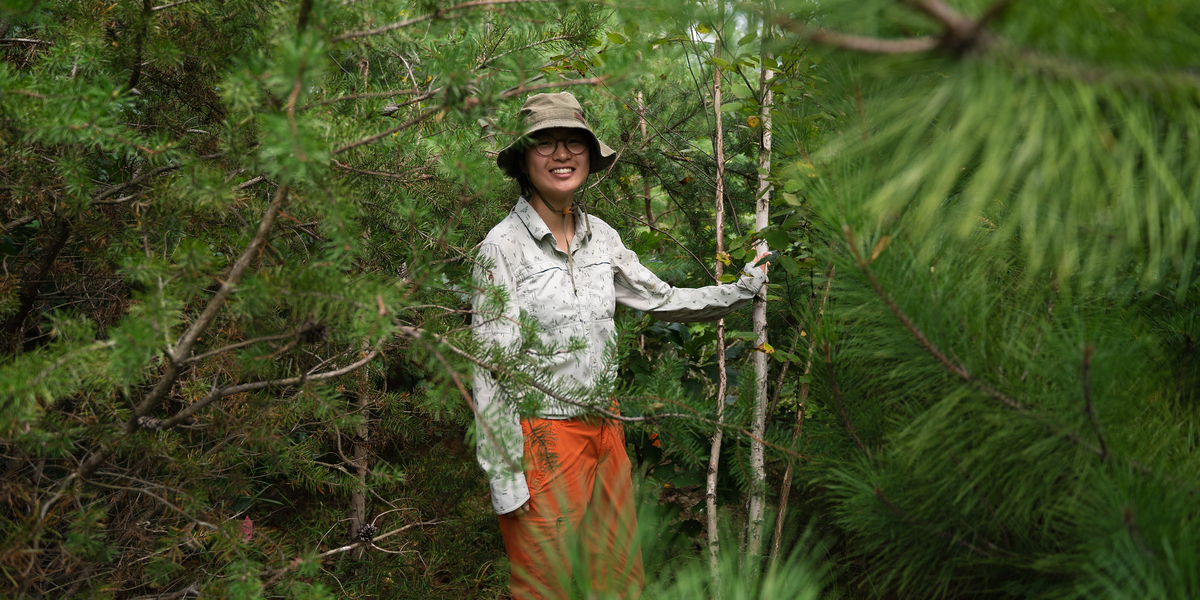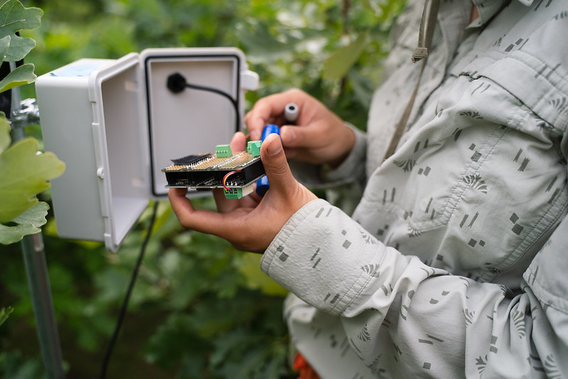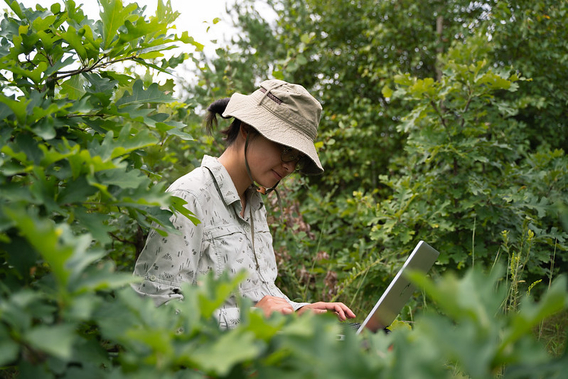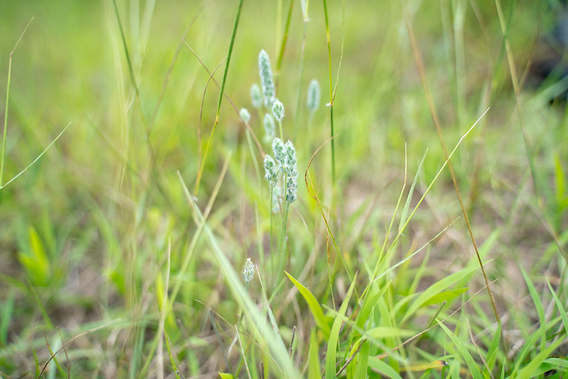
Every plot in the Forest and Biodiversity 2 (FAB 2) experiment at the College of Biological Sciences’ Cedar Creek Ecosystem Science Reserve boasts a different kind of beauty. Some are sparse with slow-growing oaks. Others are snug with happy evergreens. On occasion, oak, maple, birch and cedar grow together in an eccentric sort of harmony.
Maria Park, a Ph.D. candidatein Jeannine Cavender-Bares’ lab and currently the only graduate student to do research in the FAB 2 experiment, loves them all. “I’m trying to get a holistic picture of how tree diversity affects their local environments and tree ‘neighbors’,” she says. “It's so, so, important to understand how a diverse group of species provides resilience to their respective ecosystems.”
Park points to heaps of pine needles on the forest floor as powerful evidence of the influence a certain species can have on a local environment. Dead pine needles are slow to decompose, potentially making it more difficult for herbaceous and grassy species to compete with pine trees for light and nutrients.

But how does the local environment change when there are other tree species growing nearby? It’s unclear – Park is collecting data on the above- and below- ground conditions of each plot to provide insight. And while researchers have been collecting data on tree growth and, occasionally, soil nutrients since the establishment of the FAB 2 experiment in 2016, Park is the first one to take the lead on such consistent soil and climate readings in the experiment, all thanks to sensors and data loggers she’s placed in her FAB plots. Data loggers that she designed, programmed and implemented herself, with the help of a few colleagues.
“For the first few years of my graduate research, I was trying to get point measurements manually with a probe,” says Park. “By the time I was done it would be a different time of day and the conditions would change.” She wanted to make sure her data trends reflected her research question, and not just because the sun came out and it got hotter.
Buying both the sensors and data loggers was out of the question – too expensive. Sometimes being a graduate student means you have to get scrappy. And when you’re a maker at heart like Park, using creative ingenuity can be quite financially responsible. So she DIYed it. “I had to learn a bit of electrical engineering, and soldering, things like that.” says Park. “My friend in Civil Engineering, Xiating Chen, actually taught me how to do this. I’ve gotten so much help from all over the University.”
Now, she’s able to use the sensors to collect data points every 30 minutes. To access the sensor, she enters through the FAB plots, sometimes by ducking and maneuvering through densely overcrowded trees. Then she plugs the data into her computer. Sometimes the program has bugs. Sometimes she has to reprogram. It’s a good opportunity for her to breathe and appreciate what’s around her.

“It's beautiful here,” says Park. “Once I was doing measurements in a maple plot, and there was this Eastern Towhee – a bird – just like, jumping around digging in the leaf litter and having a good time. And I just sat there. I was like, I'm just gonna take a little break and appreciate this. That's okay with me, you know?”
As a scientist, Park revels in the variety of questions one can ask about the intricate dynamics of diverse ecosystems in the FAB experiment. But as an artist, she’s also overjoyed by the opportunity to surround herself with beauty on a regular basis. As she walks from plot to plot in FAB’s grassy margins, she finds new inspiration – a rogue tree frog, a puffball mushroom, a flower. Every square inch of the experiment is fuel for Park’s robust creative life.
“You see that?,” says Park, pointing to an unassuming clump of grass. “Sometimes, I use those as paintbrushes.” In her spare time, Park leads workshops on creating dyes with natural materials. She forages for tools, like the spikelet (i.e. seedhead) of the Timothy grass (Phleum pratense) and is always experimenting with new natural pigments. And she’s just wrapped up an art and ecology residency program at the Acreage in Osceola, Wisconsin.
She walks to her next site, admiring an abundant patch of staghorn sumac, where scarlet flowerheads burn red against the muted greenery. “I really want to make sumac-ade for my next art show,” says Park, describing a rosy-colored drink made by soaking the fruits of sumacs (drupes)in sugar-water. “It's a little less acidic than lemon, but still quite nice.”

Amidst plans for art shows and hours spent working on her thesis, Park has also been preparing for a major life change: moving with Jeanine Cavendar Bares’ lab (previously in the College’s Department of Ecology, Evolution and Behavior) to Cavender-Bares’ new appointment at Harvard University. It’s kept her quite busy.
“It’s all a bit go, go, go,” she says. “On any given day, my whole day could be art. But then when I do my fieldwork, I love that my whole day is being outside and immersed in plants. I love the extremes – I do hope there’s a balance that I can take somewhere career-wise.” – Adara Taylor